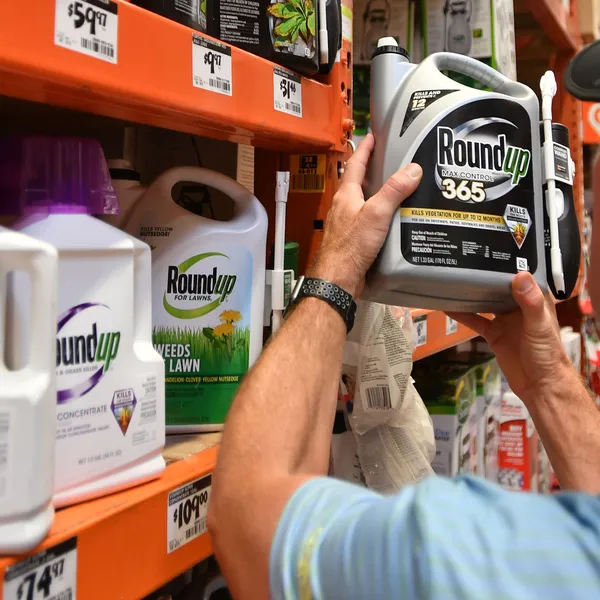The Great American 'Toxic Chemical' Experiment
Lax regulation of toxic chemicals turns us all into human guinea pigs.
Why are these numbers so far apart? Is it because lab animals' brains are more feeble and susceptible to chemicals than ours?
No. It's because we can conduct experiments by feeding mercury, lead, and arsenic to rats to find out what happens to their brains. It's unethical to do so in humans.
Unfortunately, that's exactly what we're doing -- just not in a lab.
Without the capability to conduct a lab experiment on humans, we've got a few ways to find out exactly which chemicals are bad for our brains.
Typically, most of us are exposed to low levels of a wide variety of the chemicals in our lives -- from paint, carpet, food, food containers, air, water, and more. If, after 60 years, you get sick, it's hard to say what caused it.
Sometimes the harm can be much more subtle, like the loss of a few IQ points in a child who was exposed to a chemical before birth.
The exception is usually when a group of people is exposed day after day to high doses of a chemical on the job. When they all become acutely ill, it's obvious there's a problem. The cause is fairly easy to track down.
This method works for adults -- resulting in the discovery of 214 neurotoxicants in humans -- but not in developing fetuses and infants.
To find the dozen chemicals that harm the youngest brains, scientists compare exposure levels among a group of babies while still in the womb and then track their growth in their early years. Only by comparing them to one another, scientists can detect which chemicals cause problems.
For example, one study tested pregnant mothers for levels of a pesticide, chlorpyrifos, and then followed their children for many years. They linked chlorpyrifos exposure to reduced head circumference at birth and neurobehavioral problems that lasted at least seven years.
These studies recognize that we're all being used as human guinea pigs.
Back to my first point: We know darn well that over 1,000 chemicals harm the brains of animals -- and animals' bodies are not all that different from ours. About half of the chemicals on this list are chemicals that are in our industrial solvents, pesticides, flame retardants, and other common products.
What's our current approach? Just keep using them. Move along, everyone, until scientists can prove beyond a doubt that a specific chemical made a specific person sick.
Trying to steer clear of dangerous chemicals can drive you crazy. Just try to discover which products in your life contain chemicals that are toxic to you or your kids, and how you can find non-toxic replacements for them. It's hard not to grow exasperated and give up.
And as a society, we should theoretically have more control over the process of identifying and banning toxic chemicals. But the federal law that regulates them, the Toxic Substances Control Act of 1976, has no teeth.
Corporations don't even have to test their products for toxicity before putting them on the market. And the government has a very limited ability to prevent toxic chemicals from being sold. Why?
Why do we prioritize a corporation's right to make money over the right of our citizens to be healthy?
People, particularly children and the unborn, shouldn't be guinea pigs.
Corporations should be required to prove their products' safety before they are allowed to sell them.
An Urgent Message From Our Co-Founder
Dear Common Dreams reader, The U.S. is on a fast track to authoritarianism like nothing I've ever seen. Meanwhile, corporate news outlets are utterly capitulating to Trump, twisting their coverage to avoid drawing his ire while lining up to stuff cash in his pockets. That's why I believe that Common Dreams is doing the best and most consequential reporting that we've ever done. Our small but mighty team is a progressive reporting powerhouse, covering the news every day that the corporate media never will. Our mission has always been simple: To inform. To inspire. And to ignite change for the common good. Now here's the key piece that I want all our readers to understand: None of this would be possible without your financial support. That's not just some fundraising cliche. It's the absolute and literal truth. We don't accept corporate advertising and never will. We don't have a paywall because we don't think people should be blocked from critical news based on their ability to pay. Everything we do is funded by the donations of readers like you. Will you donate now to help power the nonprofit, independent reporting of Common Dreams? Thank you for being a vital member of our community. Together, we can keep independent journalism alive when it’s needed most. - Craig Brown, Co-founder |
Why are these numbers so far apart? Is it because lab animals' brains are more feeble and susceptible to chemicals than ours?
No. It's because we can conduct experiments by feeding mercury, lead, and arsenic to rats to find out what happens to their brains. It's unethical to do so in humans.
Unfortunately, that's exactly what we're doing -- just not in a lab.
Without the capability to conduct a lab experiment on humans, we've got a few ways to find out exactly which chemicals are bad for our brains.
Typically, most of us are exposed to low levels of a wide variety of the chemicals in our lives -- from paint, carpet, food, food containers, air, water, and more. If, after 60 years, you get sick, it's hard to say what caused it.
Sometimes the harm can be much more subtle, like the loss of a few IQ points in a child who was exposed to a chemical before birth.
The exception is usually when a group of people is exposed day after day to high doses of a chemical on the job. When they all become acutely ill, it's obvious there's a problem. The cause is fairly easy to track down.
This method works for adults -- resulting in the discovery of 214 neurotoxicants in humans -- but not in developing fetuses and infants.
To find the dozen chemicals that harm the youngest brains, scientists compare exposure levels among a group of babies while still in the womb and then track their growth in their early years. Only by comparing them to one another, scientists can detect which chemicals cause problems.
For example, one study tested pregnant mothers for levels of a pesticide, chlorpyrifos, and then followed their children for many years. They linked chlorpyrifos exposure to reduced head circumference at birth and neurobehavioral problems that lasted at least seven years.
These studies recognize that we're all being used as human guinea pigs.
Back to my first point: We know darn well that over 1,000 chemicals harm the brains of animals -- and animals' bodies are not all that different from ours. About half of the chemicals on this list are chemicals that are in our industrial solvents, pesticides, flame retardants, and other common products.
What's our current approach? Just keep using them. Move along, everyone, until scientists can prove beyond a doubt that a specific chemical made a specific person sick.
Trying to steer clear of dangerous chemicals can drive you crazy. Just try to discover which products in your life contain chemicals that are toxic to you or your kids, and how you can find non-toxic replacements for them. It's hard not to grow exasperated and give up.
And as a society, we should theoretically have more control over the process of identifying and banning toxic chemicals. But the federal law that regulates them, the Toxic Substances Control Act of 1976, has no teeth.
Corporations don't even have to test their products for toxicity before putting them on the market. And the government has a very limited ability to prevent toxic chemicals from being sold. Why?
Why do we prioritize a corporation's right to make money over the right of our citizens to be healthy?
People, particularly children and the unborn, shouldn't be guinea pigs.
Corporations should be required to prove their products' safety before they are allowed to sell them.
Why are these numbers so far apart? Is it because lab animals' brains are more feeble and susceptible to chemicals than ours?
No. It's because we can conduct experiments by feeding mercury, lead, and arsenic to rats to find out what happens to their brains. It's unethical to do so in humans.
Unfortunately, that's exactly what we're doing -- just not in a lab.
Without the capability to conduct a lab experiment on humans, we've got a few ways to find out exactly which chemicals are bad for our brains.
Typically, most of us are exposed to low levels of a wide variety of the chemicals in our lives -- from paint, carpet, food, food containers, air, water, and more. If, after 60 years, you get sick, it's hard to say what caused it.
Sometimes the harm can be much more subtle, like the loss of a few IQ points in a child who was exposed to a chemical before birth.
The exception is usually when a group of people is exposed day after day to high doses of a chemical on the job. When they all become acutely ill, it's obvious there's a problem. The cause is fairly easy to track down.
This method works for adults -- resulting in the discovery of 214 neurotoxicants in humans -- but not in developing fetuses and infants.
To find the dozen chemicals that harm the youngest brains, scientists compare exposure levels among a group of babies while still in the womb and then track their growth in their early years. Only by comparing them to one another, scientists can detect which chemicals cause problems.
For example, one study tested pregnant mothers for levels of a pesticide, chlorpyrifos, and then followed their children for many years. They linked chlorpyrifos exposure to reduced head circumference at birth and neurobehavioral problems that lasted at least seven years.
These studies recognize that we're all being used as human guinea pigs.
Back to my first point: We know darn well that over 1,000 chemicals harm the brains of animals -- and animals' bodies are not all that different from ours. About half of the chemicals on this list are chemicals that are in our industrial solvents, pesticides, flame retardants, and other common products.
What's our current approach? Just keep using them. Move along, everyone, until scientists can prove beyond a doubt that a specific chemical made a specific person sick.
Trying to steer clear of dangerous chemicals can drive you crazy. Just try to discover which products in your life contain chemicals that are toxic to you or your kids, and how you can find non-toxic replacements for them. It's hard not to grow exasperated and give up.
And as a society, we should theoretically have more control over the process of identifying and banning toxic chemicals. But the federal law that regulates them, the Toxic Substances Control Act of 1976, has no teeth.
Corporations don't even have to test their products for toxicity before putting them on the market. And the government has a very limited ability to prevent toxic chemicals from being sold. Why?
Why do we prioritize a corporation's right to make money over the right of our citizens to be healthy?
People, particularly children and the unborn, shouldn't be guinea pigs.
Corporations should be required to prove their products' safety before they are allowed to sell them.

